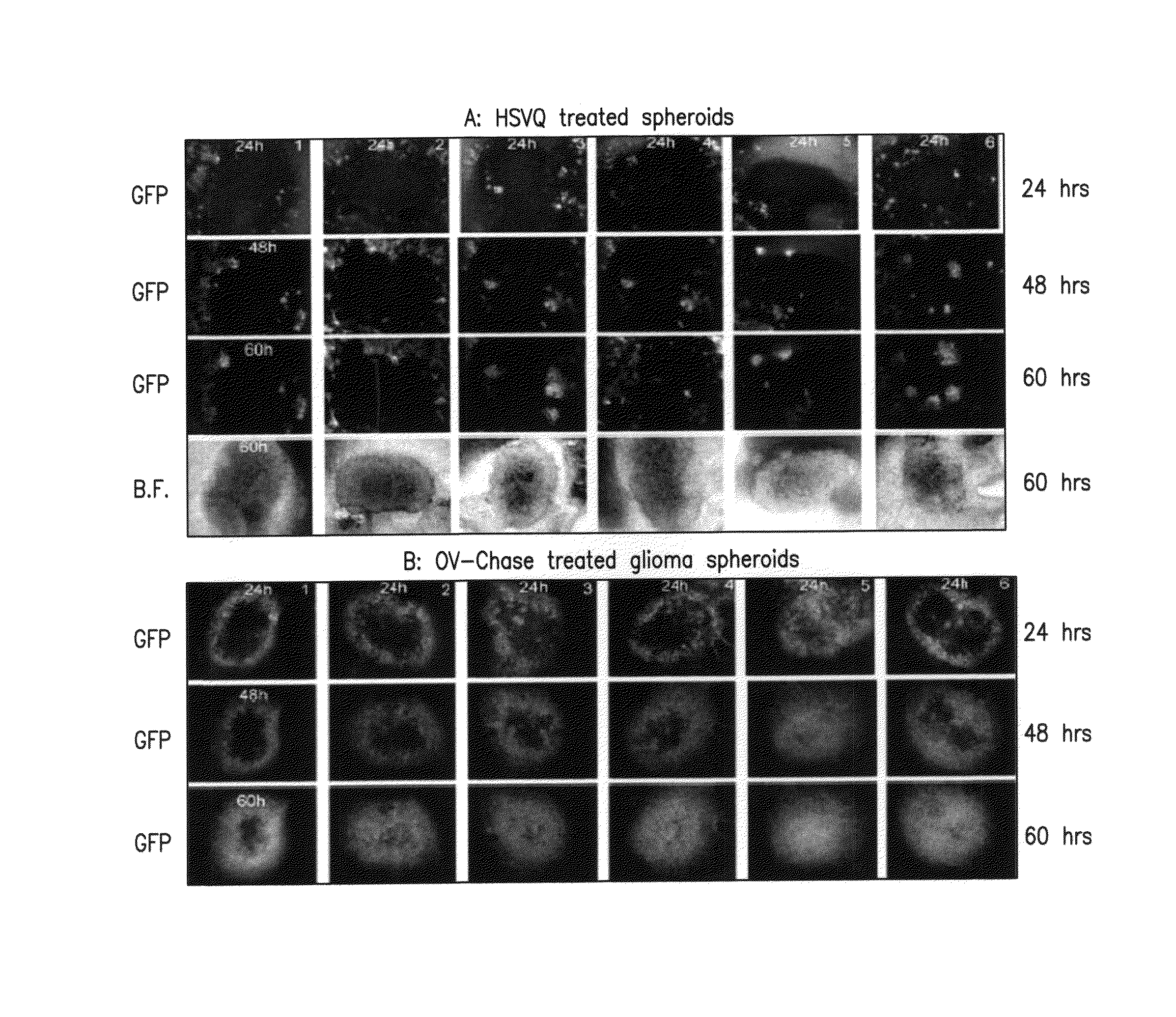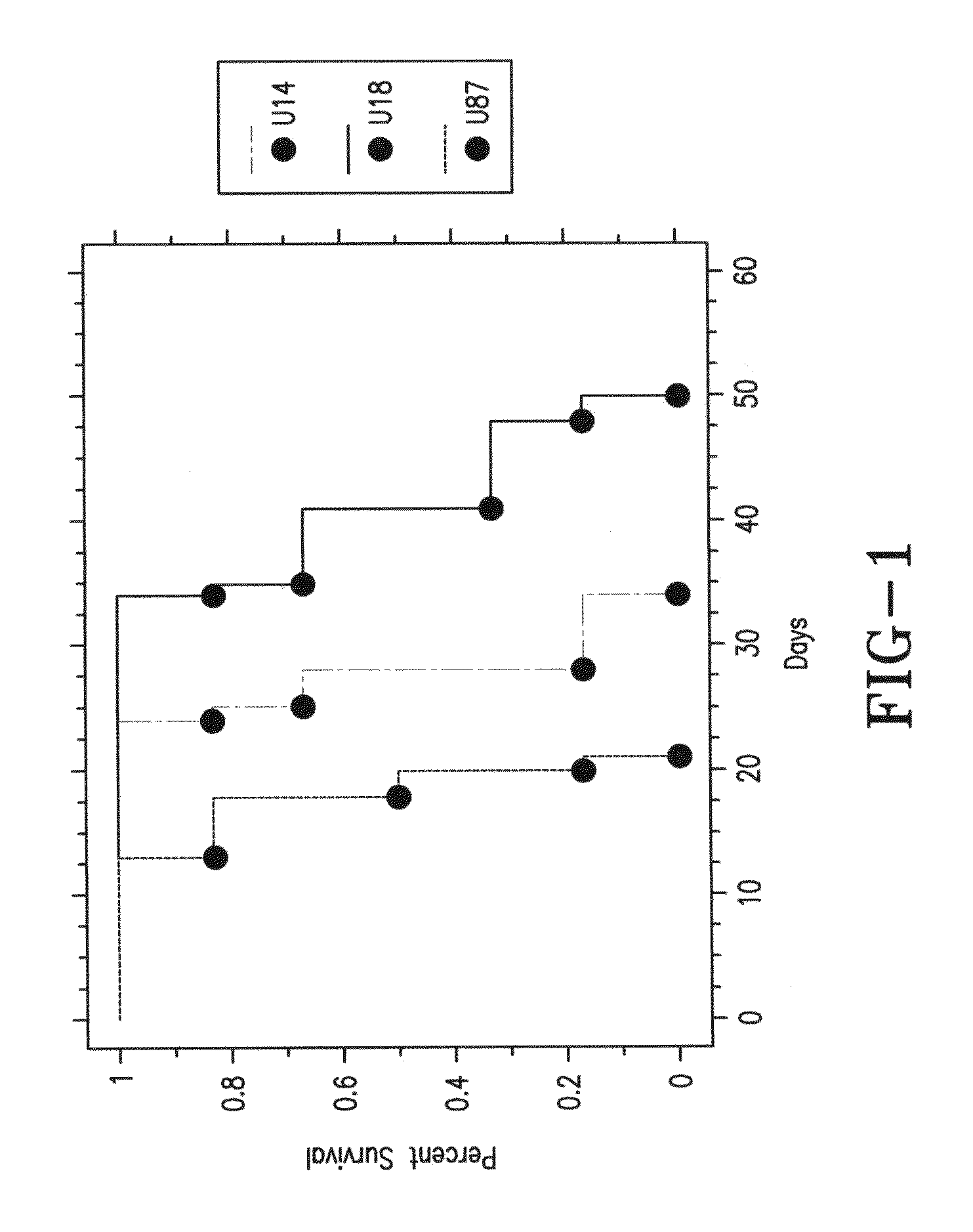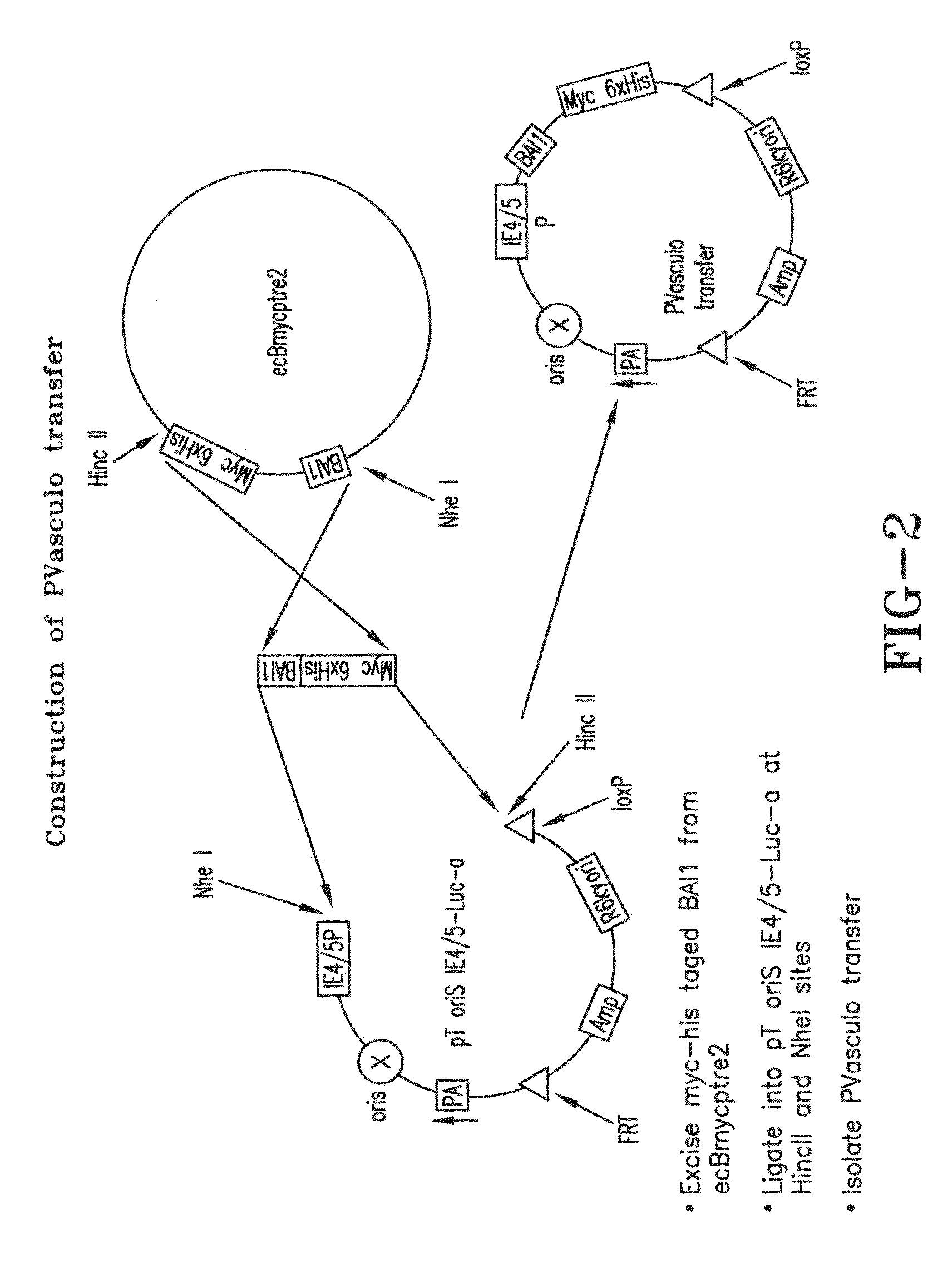Oncolytic virus
- Summary
- Abstract
- Description
- Claims
- Application Information
AI Technical Summary
Benefits of technology
Problems solved by technology
Method used
Image
Examples
example 1
Vasculostatin is Anti-Tumorigenic
[0103]We have recently discovered Vasculostatin, a fragment of brain angiogenesis inhibitor 1 (BAI1), which inhibits angiogenesis, tumor growth, and vascular permeability. We have found that BAI1 is differentially expressed in normal and neoplastic brain. This is consistent with its reduced expression in pulmonary adenocarcinoma and pancreatic and gastric cancers, we and others have found it to be absent from brain tumors, but present in normal brain and benign gliomas. The protein's brain specific expression along with its absence in a majority of human GBM specimens implies that loss of BAI1 during tumor progression may give the tumors a growth advantage.
[0104]Previous work has demonstrated that BAI1 is processed at a conserved GPS site through proteolysis, and this processing leads to the secretion of the extracellular domain of the protein. The cleaved extracellular domain yields a 120-kDa secreted fragment called Vasculostatin.
[0105]To investiga...
example 2
Creation of rHSVQvasculo
[0107]In order to produce an oncolytic virus expressing vasculostatin HSVQuick methodology was employed [1]. The HSVQuik methodology is a novel BAC-based method that utilizes two different site-specific recombination systems to introduce a transgene of interest into the deleted UL39 locus. The fHsvQuik-1 is the BAC DNA with the incorporation of the entire HSV-1 genome lacking a functional ICP6 gene and deleted in both copies of the γ34.5 gene incorporated in it. ICP34.5 allows the virus to replicate in non-dividing cells and dephosphorylates the cellular translation initiation factor (eIF-2a) that is phosphorylated in response to activation of double-stranded RNA activated protein kinase (PKR). These modifications allow the virus to replicate selectively in cancer cells. Additionally, fHsvQuik-1 has an insertion of a red fluorescent protein (RFP) in the middle of the BAC (bacterial artificial chromosome) backbone and thereby allows for efficient monitoring of...
example 3
Confirmation of Expression of Vasculostatin by the Recombinant Viral Isolates
[0112]Referring to FIG. 4, three viral isolates from each recombinant BAC ((fHSVQ1vasulo1, and fHSVQ1 vasulo2) were selected for further analysis. The resulting six viral isolates were used to infect two different glioma cell lines (LN229, and U87ΔEGFR) to evaluate Vasculostatin and viral ICP4 expression (FIG. 1). The indicated glioma cells were infected with the six viruses, 3 isolated from fHSVQ1vasculo1 (lanes 1-3) and with 3 isolated from fHSVQ1vasulo2 (lanes 4-6).
[0113]The infected cells and conditioned media were harvested 10 hours post infection and the cell lysate and TCA precipitated conditioned media was analyzed for Vasculostatin protein expression by western blot analysis. Note the presence of Vasculostatin in infected cell lysate and harvested conditioned media from infected cells but not in the control rHSVQ infected cells (bottom panel).
PUM
 Login to View More
Login to View More Abstract
Description
Claims
Application Information
 Login to View More
Login to View More - R&D
- Intellectual Property
- Life Sciences
- Materials
- Tech Scout
- Unparalleled Data Quality
- Higher Quality Content
- 60% Fewer Hallucinations
Browse by: Latest US Patents, China's latest patents, Technical Efficacy Thesaurus, Application Domain, Technology Topic, Popular Technical Reports.
© 2025 PatSnap. All rights reserved.Legal|Privacy policy|Modern Slavery Act Transparency Statement|Sitemap|About US| Contact US: help@patsnap.com



